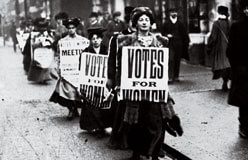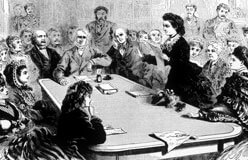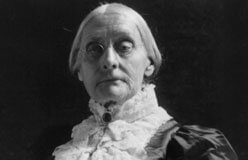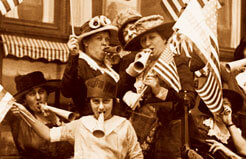The first cause that united large numbers of women wasn’t women’s rights. It was the movement to abolish (get rid of) slavery.
Black and white women began speaking out for their right to participate in public life. However, many abolitionist organizations didn’t accept female members.
Lucretia Mott helped form the Philadelphia Female Anti-Slavery Society in 1833. Similar groups sprang up in other cities. Through their antislavery work, women learned how to organize a campaign and print pamphlets. They also learned how to lead meetings, write petitions, and speak in public. In 1840, Lucretia Mott and Elizabeth Cady Stanton went to the World Anti-Slavery Convention in London. However, they weren’t allowed to participate. So the two committed themselves to fight for women’s rights.







